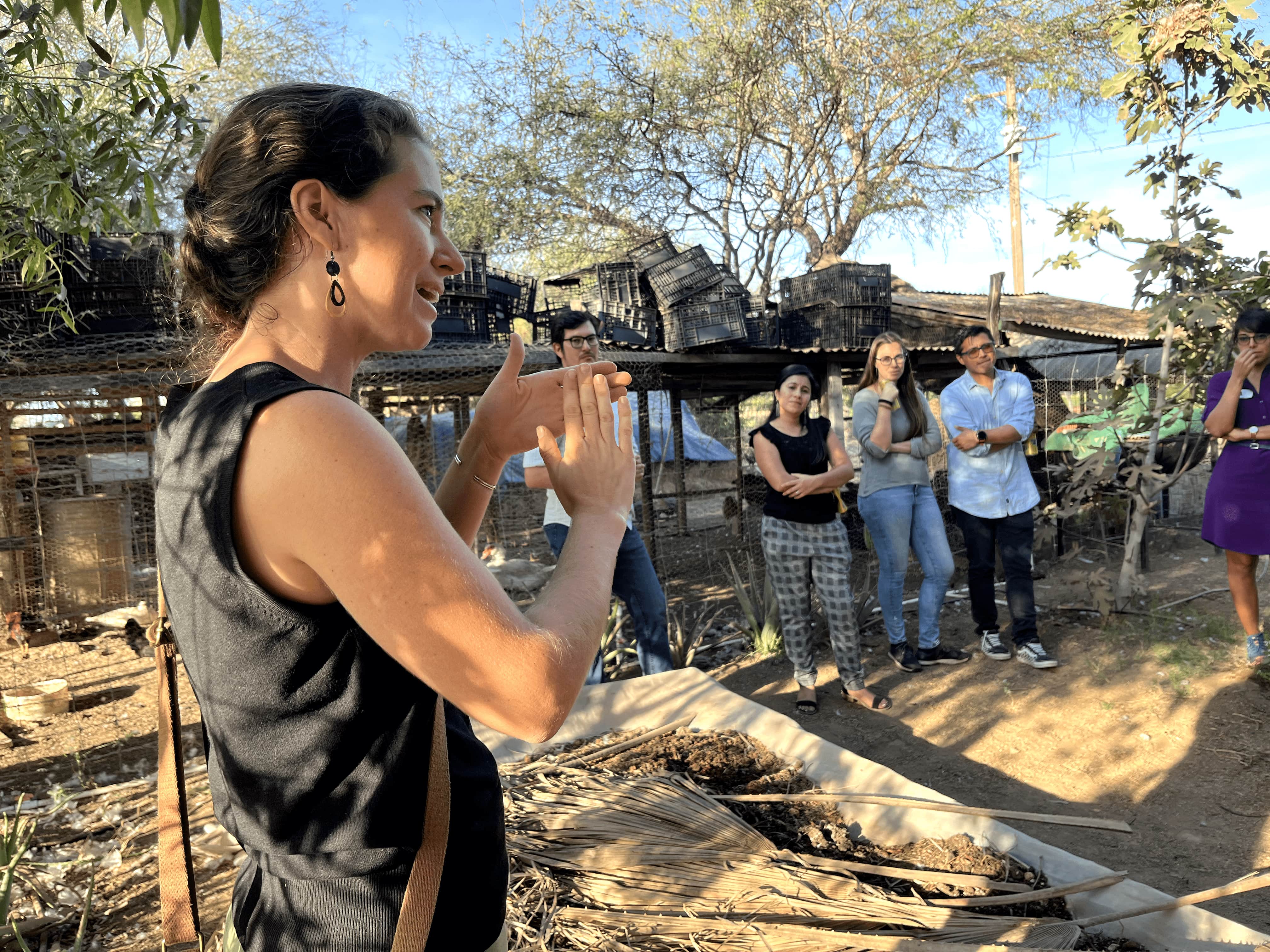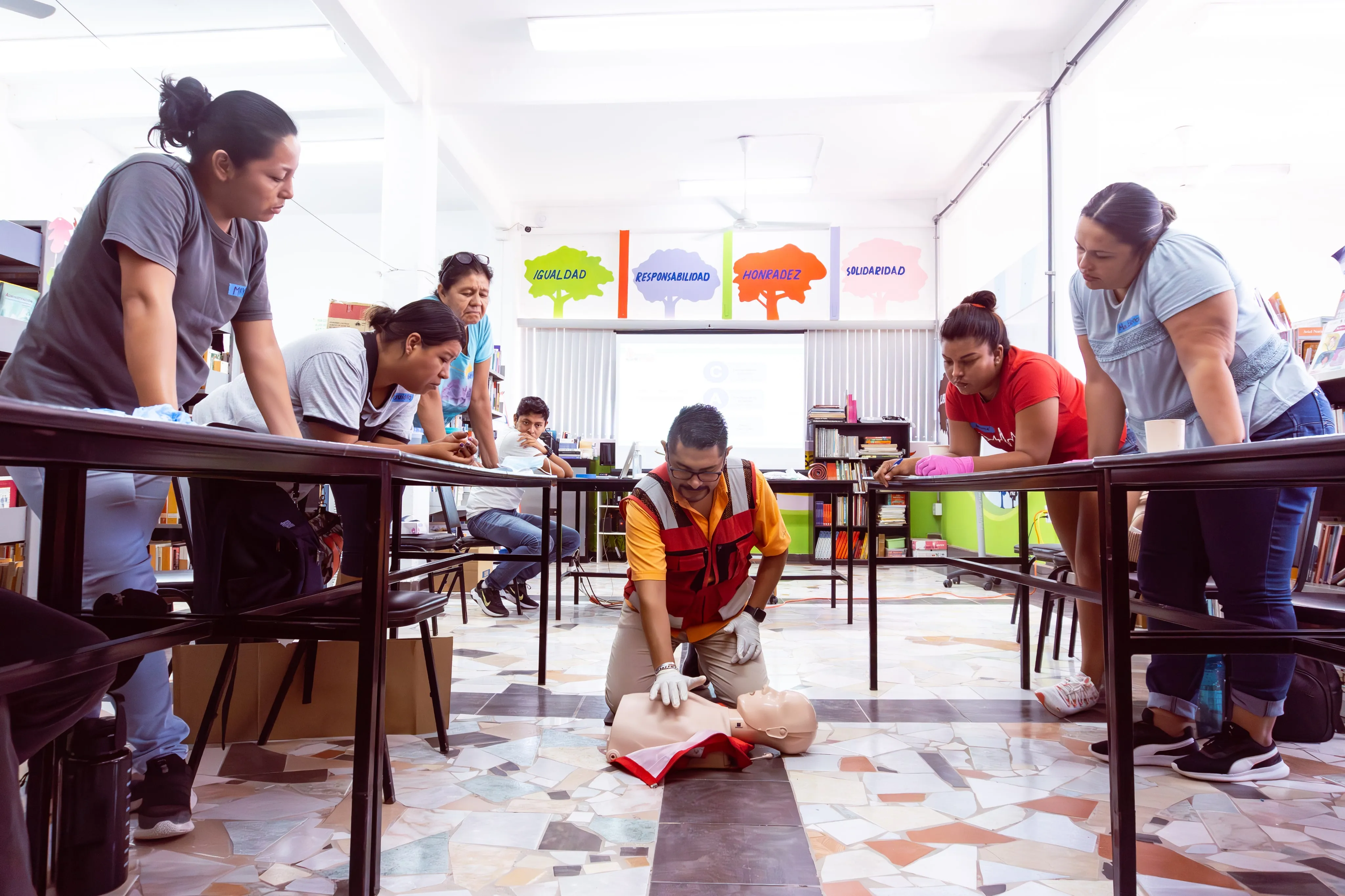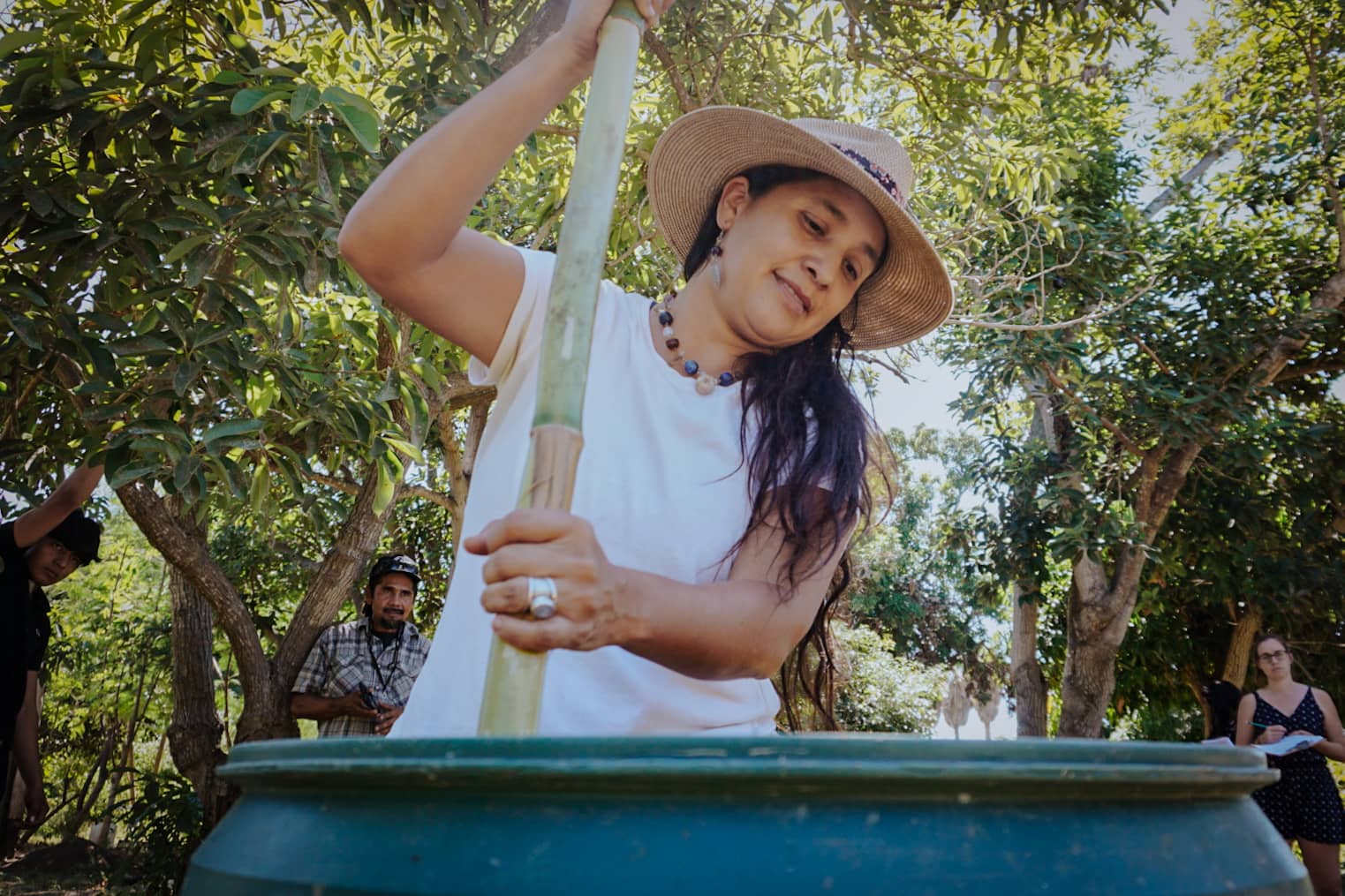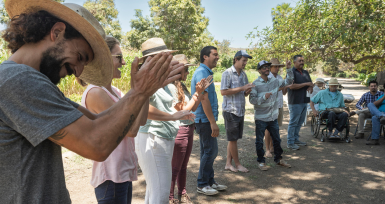Co-Creating Effective Climate Crisis Strategies for Baja California Sur
We connect local communities to help them overcome the challenges of the climate crisis. By creating safe spaces for dialogue we are generating adaptive solutions to the growing threat of climate emergencies. Our aim is to transform our bioregion into an example of resilience and regeneration for Mexico and beyond.
Our priority is to strengthen mitigation, adaptation and collective learning capacities to help communities face the challenges of climate change.
We’ve built resilience in local communities and ensured food flows to the places it is needed most during and after hurricanes Olaf (2021) and Kay (2022).

Saving Lives with Readiness for Climate Emergencies
Climate emergencies affect some far more than others and creating resilience in the face of devastating hurricanes, floods and other disasters is crucial to creating a safer, fairer state for everyone. Nobody wants to return to the events of Hurricane Odile in 2014. Together we can show the world the importance of solidarity in the face of the growing climate crisis.

We work tirelessly to ensure that no one in Baja California Sur goes hungry during an emergency. Our food distribution programs help provide nutritious meals to families in need, helping them weather the storm no matter how difficult that is.
We understand the causes and the symptoms of the climate crisis and the need for communities to prepare themselves for more climate catastrophes but we also believe in the power of collaboration to come up with solutions.
The ultimate goal is to achieve the levels of abundance in the Baja California Sur food chain that everyone has the resources they need to feed themselves in any emergency. Collaboration and solidarity are key to healthy communities.

How We’re Going to Achieve it
We’ve created a powerful network of local community leaders that are prepared to respond to the challenges of climate change.
Through education we help create a more organized response to climatic phenomena by preparing communities to respond to climate emergencies and with local donors, agricultural producers, companies and civil and governmental organizations we deliver food security in emergencies.
Our approach is to use collaborative leadership skills and co-create strategies that will help communities adapt to the changing environment.
The State Plan for Response to Food Emergencies (PEREA), one of our outstanding projects, was implemented in coordination with our allies in the five municipalities of Baja California Sur.
Beyond providing food security during emergencies, we implement various projects focused on education, leadership, risk management, health and nutrition, administration and economy, and water management in the communities where we have built our network.
Our outreach programs are harvesting a host of ideas on how to respond to more systemic problems that need to be addressed.
What’s Needed to End Food Insecurity in Baja California Sur

We know we’re winning because we can feel the self-organizing forces we have unleashed in Baja California Sur and we know we can do more. These are the tools we need to adapt to climate change in the region.
Money
Support us with a small or large donation to help fill our funding gapand help us increase our outreach program in 2022/2024.
Building a Winning Team with the BCS Climate Champions
We’d like to say a big thank you to all of you who are already helping. If you want to be part of a movement to build resilience in Baja California Sur with love then please join us.

Join a Winning Team
We’ve created a winning team of Baja California Champions that are building resilience in the region by connecting the power of oases in the region. If you want to join us, we accept donations in the following currencies: USD$, MXN$, Food, Love and Kindness.







Seeking Systemic Change in Baja California Sur
ASA seeks to create a knock-on effect beyond our programs. Together they forge a systemic vision that, when combined with the challenging context of our desert landscape, offers invaluable insights for other bioregions struggling to adapt to desertification and the deterioration of their water systems.


